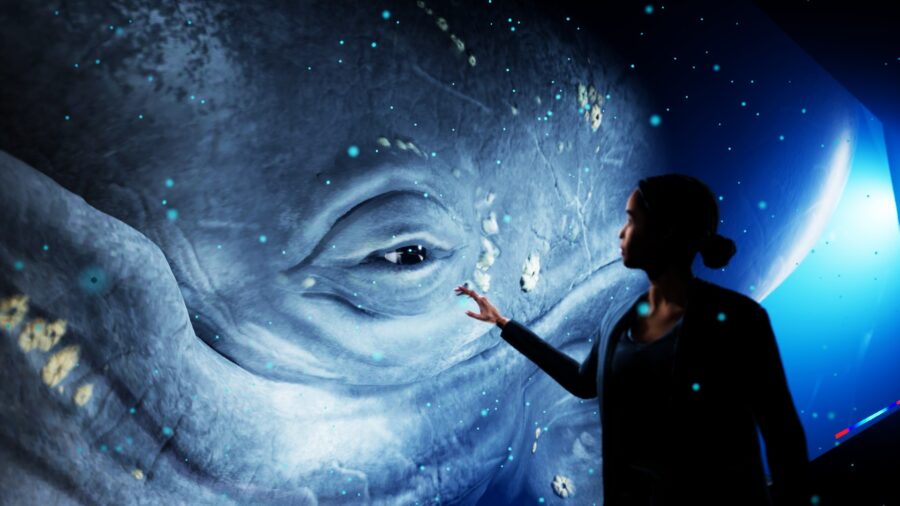Hologram Zoo Is Real And Signals The Future

The number of Star Trek sci-fi technology that ultimately became real-life tech never ceases to amaze. The series inspired the development of touchscreens, communicators became mobile phones, PAADs became tablets, replicators became 3D printing, and now holodecks are becoming virtual and augmented realities (VRs and ARs). And while fully immersive environments like the holodeck still remain in the realm of sci-fi, a recent report from BBC on a hologram zoo indicates that the future isn’t so far-fetched when it comes to immersive holographic.
The holograms use a new depth technology that not only makes the animals seem big but makes them visible as 3D objects rather than suspended 2D images.
According to the report, the visitors of Australia’s Hologram Zoo, which opened earlier this year, can dodge stampeding elephants, peer into the gaping jaws of a hippopotamus, pet-friendly giraffes, and witness more than 50 lifelike displays from dinosaurs to gorillas—all crafted from concentrated beams of light.
It’s a fancy way of saying that the technology uses lasers. The creator of the Hologram Zoo claims that it’s the world’s most futuristic animal theme park, as it relies on technology that hasn’t been used elsewhere in the world.

Just like most 3D visuals, the technology behind the Hologram Zoo basically employs digital trickery to trick the brain into seeing something that isn’t really there. For a supercomputer that computes at 172,000 GHz and runs millions of processes daily (a broad oversimplification of the human brain’s computing power) just to keep us alive, the human brain is rather easily tricked. The holograms use a new depth technology that not only makes the animals seem big but makes them visible as 3D objects rather than suspended 2D images.
A hologram zoo is replacing real animals with a new 3D experience just like the real thing.
We won’t dive into the intricacies of the technology’s inner workings, but we’ll say that the technological advancements used in Hologram Zoo are massive from both technical and economic standpoints. Firstly, the company behind the Hologram Zoo, Axiom Holographics, managed to produce an algorithm that significantly reduces the computing power necessary for displaying holographics tenfold.
Furthermore, they strive to make the technology more accessible from a financial standpoint, considering that holograms have always been prohibitively expensive.
And while we’re slowly turning to greener technologies, zero carbon emissions, better television, cars, smartphones, and light bulbs, holography is just another step on the stairway of human technological achievements.
The fact that humans can now produce a hologram zoo might be a small step for one company but a massive step for humanity. Australian Nation University is currently experimenting with nano-photonics, a technology that uses holography, lasers, and microreflective surfaces that have a broad range of applications, from optics to diagnostic tests, domestic ease-of-life uses, and even medicine—as it could potentially help guide surgeons deep inside the patient’s body at a cellular level in real-time.
And while we’re slowly turning to greener technologies, zero carbon emissions, better television, cars, smartphones, and light bulbs—which have also become “smart”—holography is just another step on the stairway of human technological achievements.
The Holographic Zoo of today, a truly awe-inspiring achievement—is a pop-up ad of tomorrow, showing us floating hamburgers, pizzas, and other goods floating in the air in a possible cyberpunk future depicted in the first season of Altered Carbon or Ghost in a Shell.
And while the scenario described above still remains in the domain of science fiction, holograms, such as those used in Hologram Zoo, have made their way from Star Trek into the real world.












